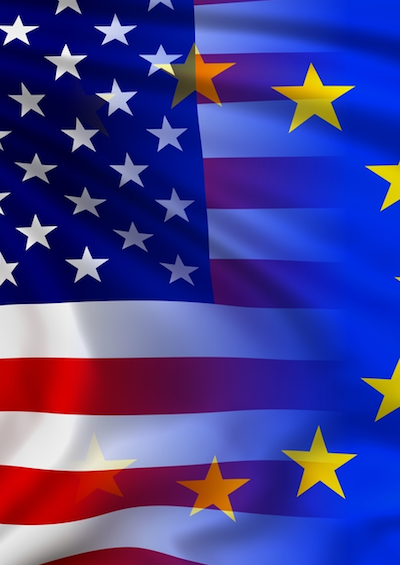US-EU Trade Talks: Two Giants at Loggerheads
Look for significant noise, but not for a genuine trade war across the Atlantic.
April 25, 2019

A potential US-EU trade war could be in the offing. Look for significant noise, but not for a genuine trade war that could disrupt the economic outlook materially. Because the two sides could hurt each other significantly, mutual deterrence will hopefully prevent the worst.
Trump’s tweet heat
On the U.S. side, President Donald Trump‘s tweet from April 11th, scolding the EU for being a “brutal trading partner” — with the UK and the United States “which will change“ — is not just a compliment in disguise from the self-styled “master of the deal”. It carries a clear threat.
Trump, who has to react to his Commerce Department’s report on car imports by 17 May, will not treat the EU with velvet gloves. That he has escalated the long-standing Airbus-Boeing dispute with a specific retaliatory threat before the WTO has authorized such an action underscores the risk.
EU: On solid feet
On the EU side, EU member states just gave the EU Commission tough guidelines for the upcoming negotiations with the United States — after nine months of internal debate.
The EU envisions the two sides as going for what one might deem a TTIP light — seeking to eliminate mutual tariffs on industrial goods and agreeing procedures to make it easier for companies to meet technical product requirements on both sides of the Atlantic.
The EU’s mandate for talks comes with clear limits. It explicitly excludes agriculture and public procurement. The EU also vows to maintain its high EU consumer protection standards and to take full account of the “environmental impact arising from differences in the EU and U.S. regulatory frameworks.”
That the United States has abandoned the “Kyoto” climate accord has made the EU — and especially France — even more uncompromising on these issues. In addition, the EU will negotiate but not conclude an agreement with the United States, while the U.S. steel and aluminium tariffs are still in place.
To some extent, the restrictive mandate is a nod to France. In an unprecedented move in trade matters, Paris nonetheless objected to finalizing an EU position ahead of the upcoming EU elections, to be held on May 23-26.
US car tariffs not a real lever
While some in the United States seem to see the threat of car tariffs as a lever to change EU agricultural policies, the EU’s negotiating mandate makes it once again clear that the EU will not yield on this issue.
Losses for French farmers would be unacceptable for French president Emmanuel Macron whose “yellow vest” upset started as a rural protest against allegedly detached urban elites.
In a similar vein, Germany has no appetite for any deal that would lower consumer protection standards for foodstuffs. Beyond some token gestures (“we buy more U.S. soybeans if they are cheap enough”), agriculture is a political no-go for Germany, France and most other EU members.
To be sure, adjusting its demands to this fact will not come easy or fast for the Trump Administration.
EU is a superpower in global trade
As the UK just found out the hard way, the EU is a superpower in global trade. The EU Commission tends to stick to its mandate once member states have agreed it. On the global stage, the EU is the only player on par with the United States. That is probably one reason why Trump (and UK Brexiteers) dislike the EU.
A lot is potentially at stake. The exchange of goods and services between the United States and the EU remains the biggest bilateral trade flow in the world. In 2018, the United States exported goods and services worth $576bn to the EU versus imports worth $689bn.
However, including license fees and similar earnings of U.S. internet giants in the vast EU market, the U.S.-EU bilateral current account is close to balance.
While the fact that the EU has put hefty fines on the U.S. tech giants recently has raised eyebrows in the United States, the penalty also highlights the importance of the EU market for these companies.
Stay tuned.
If you want to find out why, despite all the noise that’s already there and will certainly intensify, there are reasons to be hopeful on U.S.-EU trade, click here.
Takeaways
The exchange of goods and services between the US and the EU remains the biggest bilateral trade flow in the world.
In 2018, the US exported goods and services worth $576bn to the EU versus imports worth $689bn.
On the global stage, the EU is the only player on par with the US. That is probably one reason why Trump (and UK Brexiteers) dislike the EU.
Because the US and the EU could hurt each other significantly in a trade war, mutual deterrence will hopefully prevent the worst.
Lowering consumer protection standards for foodstuffs is a political no-go for Germany, France and most other EU members.

